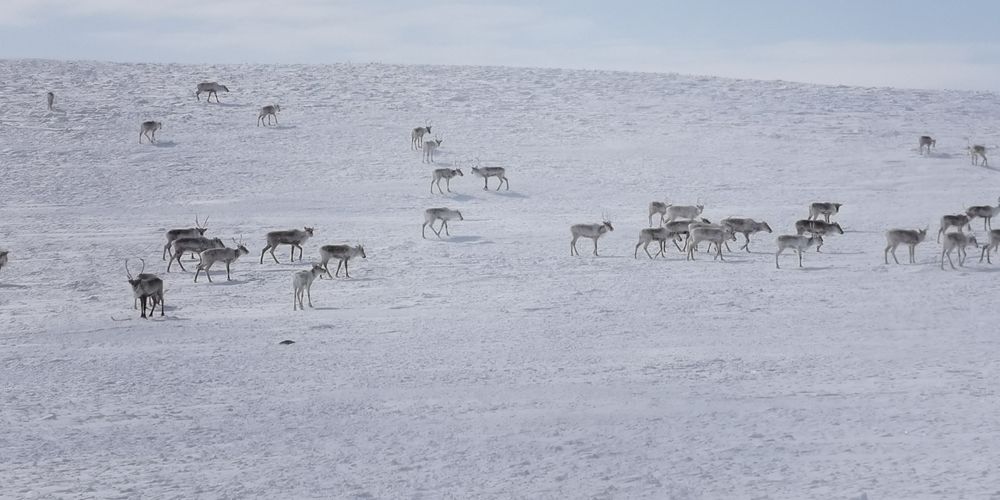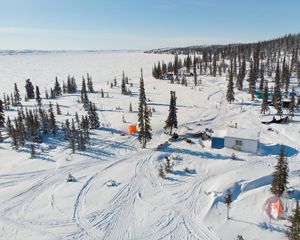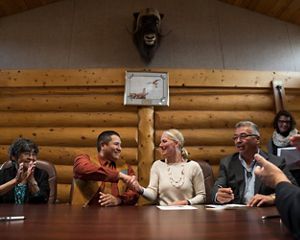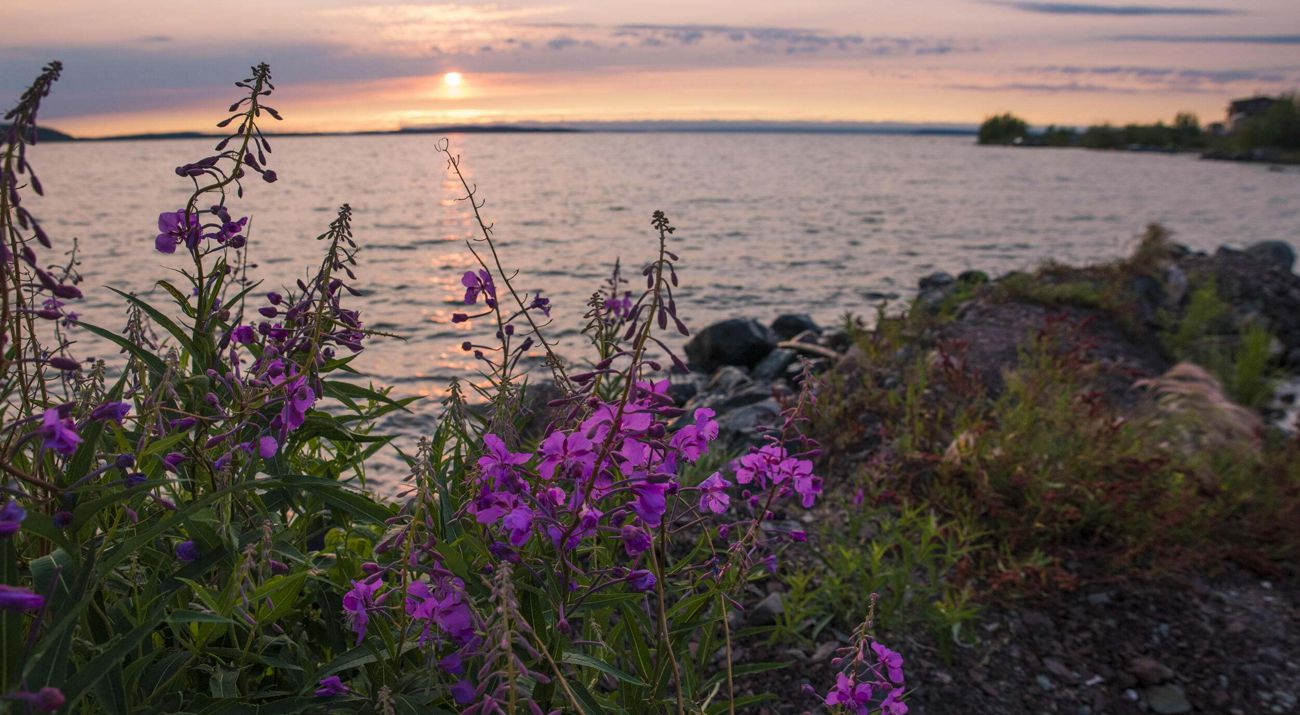
Uniting Knowledge Systems
New tools integrate science and Indigenous knowledge to protect sacred places and caribou in the Northwest Territories
Leon Andrew is Shúhtaot’ı̨nę, born and raised in Tulı́t’a, Northwest Territories (NWT), the place where the two rivers — the Dǝho (Mackenzie River) and the Sahtú Də (Bear River) — meet. Shúhtaot’ı̨nę means the people of the mountains. To the west of Tulı́t’a are miles and miles of mountain ranges. Leon knows this landscape intimately. “I haven’t walked all of it,” he says, “but most of it I did.”
Leon began travelling the mountain trails as a boy in the early 1950s. On his first trip, Leon, his dad, his cousin and a group of Elders walked overland from Begádeé (Keele River) to Tulı́t’a. It was on this trip that Leon learned to “experience the bush.”
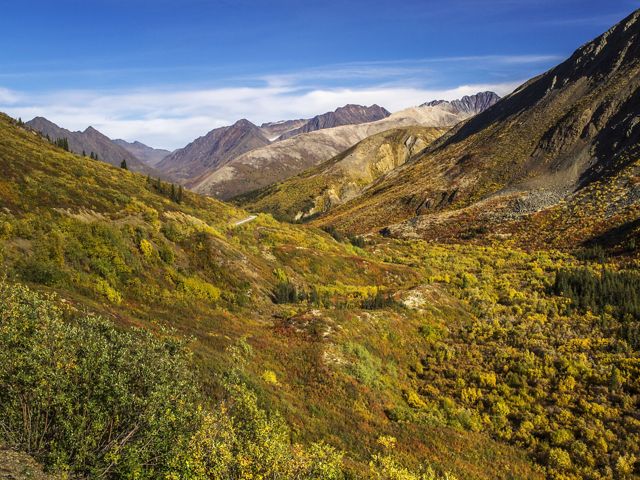
“The Elders taught us about everything that we saw along the way,” he explains. “In the mountains, they showed me the valleys that come out of the hills and the areas where moose live. I learned about muskeg and beaver dams and good places to go fishing.”
Nío Nę P’ęnę́ is what the Shúhtaot’ı̨nę call the ridges and peaks that stretch from the Turǝ́jı Dǝ́ (Twichya River) in the north to Nááts’ıhch’oh Mountain in the south and straddle the border between the NWT and Yukon. It is a vast region, spanning more than 7.9 million hectares.
Nío Nę P’ęnę́ has long been a gathering place and a source of traditional knowledge and practices. Shúhtaot’ınę, Métis and Tu Łidlini Dena describe it as the backbone of the region because it provides critical habitats for wildlife, including shúhta goɂepé/bedzih/gūdzįh (mountain caribou), which migrate through the area.
It is also a vulnerable landscape. “When we talk about Nı́o Nę P’ęnę́,” Leon explains, “we’re talking about historic, sacred places. Those kinds of areas, according to the Elders, are meant to be, to hold things together for us. They exist for wildlife to be connected to. When those areas get bothered, impacted, the wildlife would abandon them. That’s what the Elders say.”
Quote: Charlie Dick
My job is to teach the younger generation about the importance of the Dena lifestyle, living off of the land, taking care of the land.
In recent decades, Elders such as Leon and Charlie Dick, who is Tu Łidlini Dena from Ross River, have observed declining numbers of caribou and moose, melting ice patches and permafrost, and increased wildfire activity. There are many interrelated explanations for these changes, including climate change, industrial development, increased motorized access to the region, poor hunting practices and inadequate policy.
These changes are of grave concern to Charlie, who wants to ensure “there are animals for the next generation.”
“My job,” he says, “is to teach the younger generation about the importance of the Dena lifestyle, living off of the land, taking care of the land.”
He adds, “The passing of knowledge about our land and responsibility as land stewards is very important. Land is important to us — caribou, moose, sheep, other natural food sources are really important to us. We continue to use them, and we need to make sure that it’s there for us, not only for me, but for the next generation.”

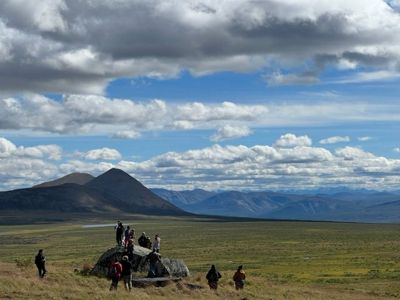
Leon is also concerned about the water. “The Elders talk about Nío Nę P’ęnę́ as the place where the water is born,” he says. The area is the headwaters for important rivers, including the Turǝ́jı Dǝ́ (Twichya), Begádeé (Keele) and Mıhcho Tsıé́ Dǝ́ (Caribou Cry) in the NWT and the Ross, Hess and MacMillan rivers in the Yukon. This means contamination from industrial development and low water levels in Nío Nę P’ęnę́ can have a much wider impact.
These concerns brought together Shúhtaot’ınę, Métis and Tu Łidlini Dena for the first time in 2014 to discuss the future of Nı́o Nę P’ęnę́ and mountain caribou. At that meeting, the neighbouring nations agreed to develop a plan for research, monitoring and land protection. Mountain Dene/Dena and Métis communities on both sides of the border know the key to understanding this landscape is understanding the caribou — one does not exist without the other.
Successive meetings between 2016 and 2019 led to the drafting of Nío Nę P’ęnę Begháré Shúhta Goɂepę́ Narehɂá — Trails of the Mountain Caribou Plan and the initiation of the Nı́o Nę P’ęnę́ Begháré Shúhta Goɂepé Narehɂa — Trails of the Mountain Caribou research project. Leon is the principal investigator of the project.
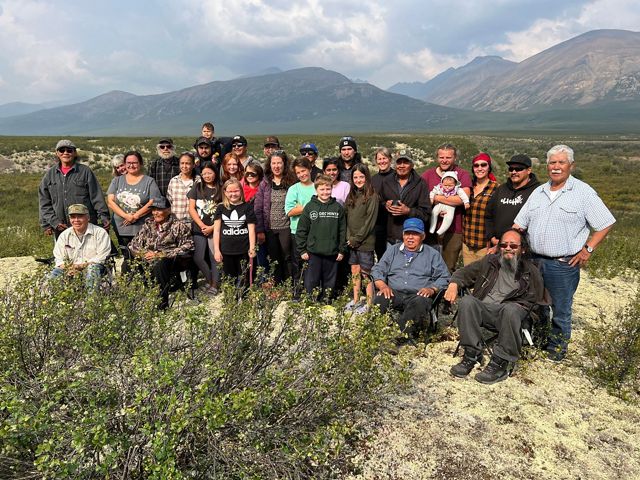
In 2021, the Nı́o Nę P’ęnę́ Indigenous Knowledge Hub was launched, with the support of Nature United and Braiding Knowledges Canada. The Hub enables knowledge sharing between Dene/Dena, Métis, researchers and long-term inhabitants and harvesters, including outfitters, and nurtures collaborative stewardship relationships that stretch across treaties and other political boundaries.
Together, the research project and the Hub are generating evidence that supports the biocultural and socioeconomic significance of Nı́o Nę P’ęnę́, as well as a framework for caribou conservation and habitat protection. They are also supporting the establishment and expansion of Indigenous-led Guardian and land protection initiatives.
The idea of a geospatial hub — a digital data anchor guided by Indigenous values and priorities and respectful of Indigenous data sovereignty — emerged as a way to further support these goals. Co-developed by the Nı́o Nę P’ęnę́ Working Group and the Sahtú Renewable Resources Board, with technical expertise from Nature United, the Nı́o Nę P’ęnę́ Geospatial Hub contains maps, reports, images and audio and video recordings featuring knowledge holders.
The Geospatial Hub also provides tools for collaboration, so Sahtú communities can actively participate in planning and decision-making alongside government agencies, co-management peers from other regions, researchers and non-profits. It will be a valuable resource for members of the public wanting to learn more about Nı́o Nę P’ęnę́.
Together, these tools reflect the partnership and commitment of many to protect Nío Nę P’ęnę́ — ensuring a future for caribou, and safeguarding the languages, laws, and ways of life of Shúhtaot’ınę, Métis and Tu Łidlini Dena, so they can continue their ancient responsibilities as guardians of Nı́o Nę P’ęnę́ for generations to come.
Join Us
You can get the latest news about our work across Canada when you sign up for our free e-newsletter.
